Pandam Museum

Beez Neez now Chy Whella
Big Bear and Pepe Millard
Mon 17 Oct 2016 22:47
|
The Tin Museum, Tanjung
Pandan, Belitung
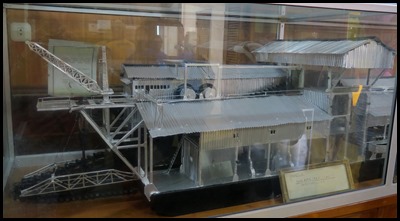 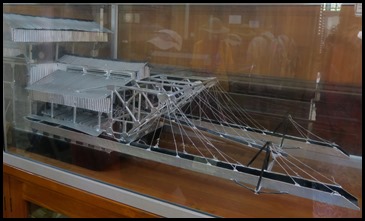 After our amazing school visit we
climbed aboard the buses and within minutes we were outside a museum. Soon
inside we saw a model of our first tin mining dredger
(back and front) - they cause so much damage to reefs by burying them in
sand.
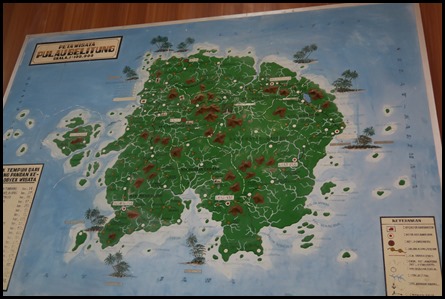 The white dots
represent tin mines, which has brought wealth to the island.
Belitung was in British possession
from 1812 until Britain ceded control of the island to the Netherlands in the
Anglo-Dutch Treaty of 1824. Belitung is a source of tin, clay, iron ore and
silica sand. The Dutch mining company NV Billiton Maatschappij derives its name
from the island’s English name (Billiton). Billiton merged with BHP in 2001 to
form the largest diversified resources company, BHP Billiton.
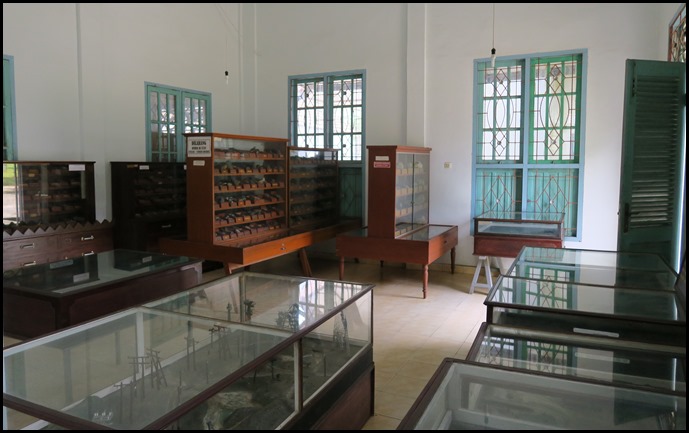 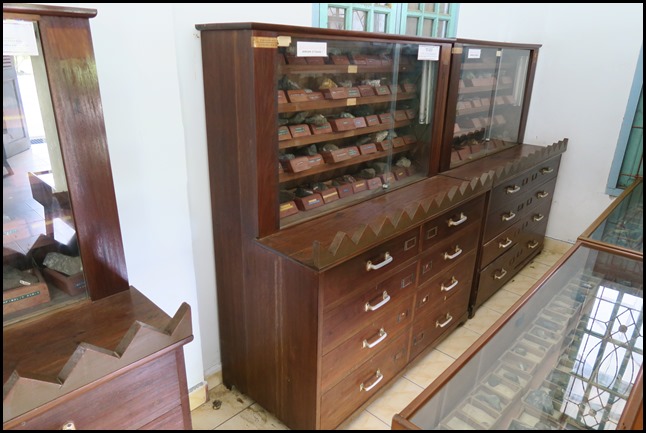 Display cupboards with so many different rocks, all labelled.
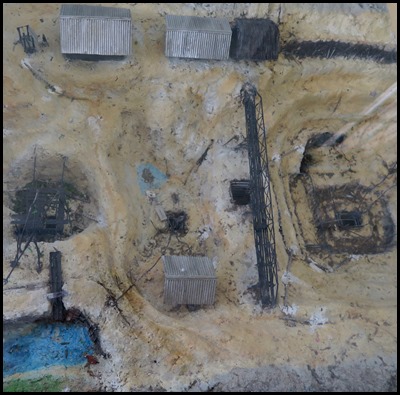 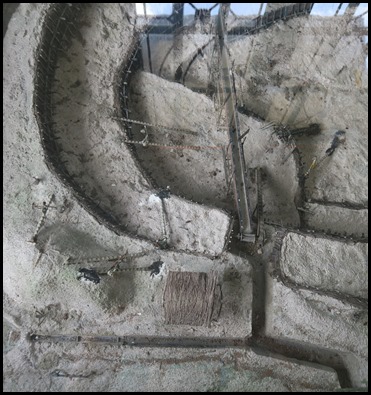 Models of tin
mines
The museum (originally called Museum
Geologi and situated in Kelapa Kamput) began in 1962 with the collection of an
Austrian geologist called Dr Rudolf A.J. Osberger (1928-1972) who wanted to show
the history of tin mining on Belitung. After his death, the museum was taken
over by the local government and moved to one of the Dutch built houses
originally used as living quarters for ferrymen during the colonisation era. It
was also used as an office for N.V. Billiton Maatschappij. More was added to the
collection including Chinese ceramics, weapons, metal equipment and a mini zoo
at the rear housing native animals of the island.
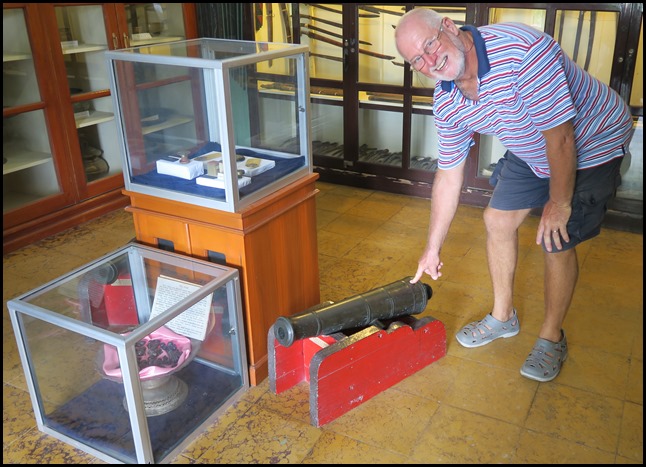 We moved to the weapon room and the trigger finger moved into operational mode – this time
and uniquely right next to a glass case containing...............
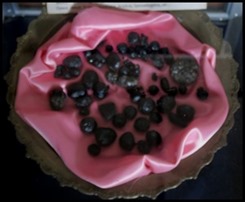 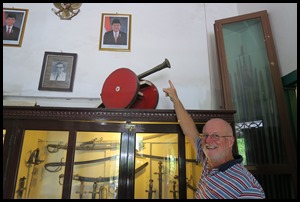 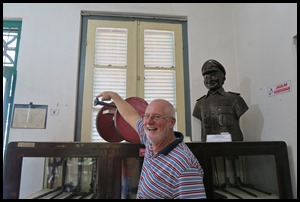 ............meteorites, then the trigger finger couldn’t reach, then one it
could. Happy Bear.
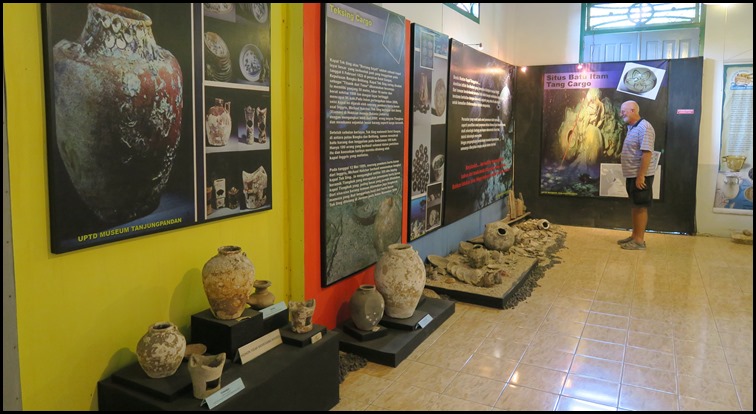 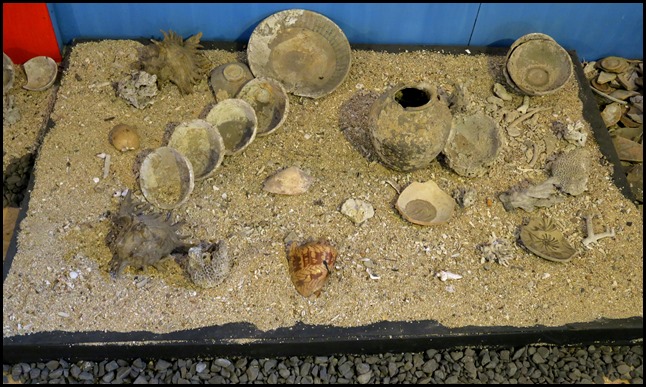 The far end of the far room was
dedicated to the Tek Sing and some of her
cargo.
An information panel in
English read: The Tek Sing (Chinese, “True Star”) was a large
three-masted Chinese ocean-going junk which sank on February 6, 1822 in an area
of the South China Sea known as the Belvedere Shoals. The vessel was 50 metres
in length, 10 metres wide and weighed about a thousand tons. Its tallest mast
was estimated to be 90 feet in height. The ship was manned by a crew of 200 and
had approx. 1600 passengers. The great loss of life associated with the sinking
has led to the Tek Sing being referred to in modern times as the
“Titanic of the East”.
Sailing from the port of Amoy (now
Xiamen in Fujian, People’s Republic of China), the Tek Sing was bound
for Jakarta, Indonesia laden with a large cargo of porcelain goods and 1600
Chinese immigrants. After a month of sailing the Tek Sing’s captain, Io
Tauko, decided to attempt a shortcut through
the Gaspar Strait between the Bangka-Belitung Islands, and ran aground on a
reef. The junk sank in about a hundred feet of water.
The next morning, February 7, an
English East Indiaman captained by James Pearl sailing from Indonesia to Borneo
passed through the Gaspar Strait. The ship encountered debris from the sunk
Chinese vessel and an enormous number of survivors. The English ship managed to
rescue about 190 of the survivors. Another 18 persons were saved by a wangkang,
a small Chinese junk captained by Jalang Lima. This Chinese vessel may have been
sailing in tandem with the Tek Sing, but had avoided the
reefs.
On May 12, 1999, British marine
salvor Michael Hatcher discovered the wreck of the Tek Sing in an area of the
South China Sea north of Java, east of Sumatra and south of Singapore. His crew
raised abut 350,000 pieces of the ship’s cargo in what is described as the
largest sunken cache of Chinese porcelain ever recovered. Human remains were
also found, but they were not disturbed as most of Hatcher’s crew, being
Indonesian and Chinese, believed that bad luck would befall any who disturbed
the dead. The Tek Sing’s recovered cargo was auctioned in Stuttgart,
Germany in November 2000.
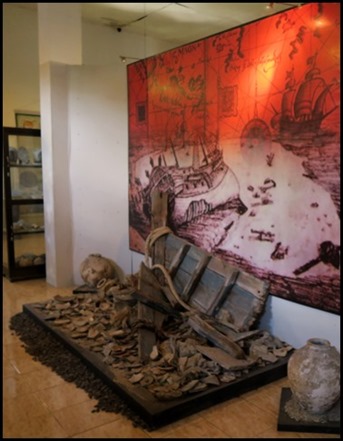 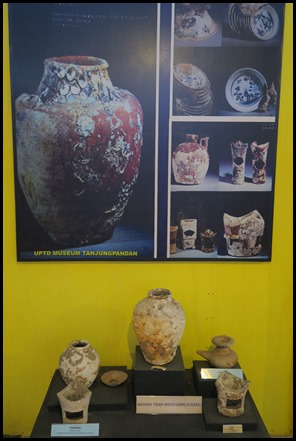 Amazing to us was the fact that these
incredibly old bits and bobs were just there........
In any other museum they would be in climate-controlled, heavily locked glass
display cases. Even the little black stones marking the edge of the floor
displays were unmolested by visitors – can you imagine that being the case in
most English museums......
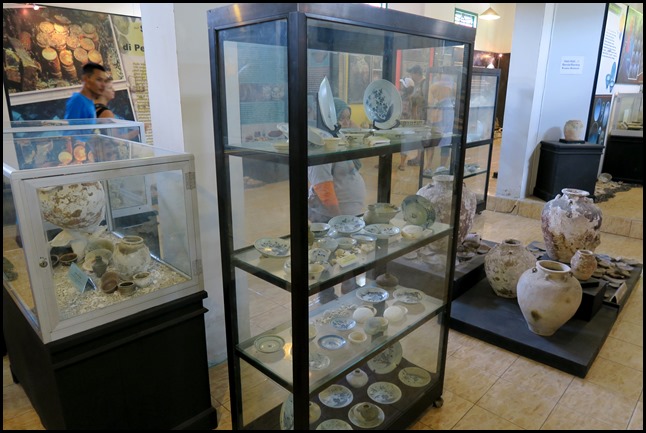 Special bits of
porcelain were in glass cases.
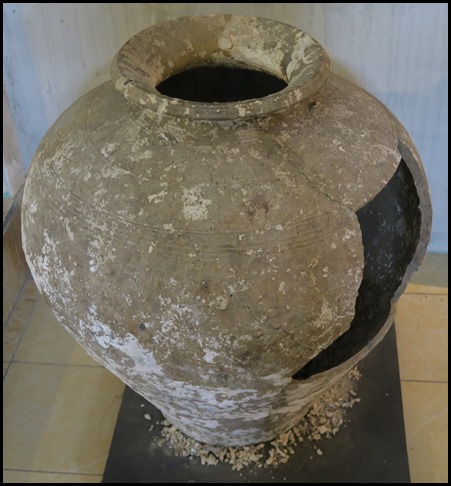 A massive, part-restored pot dominated the other wall.
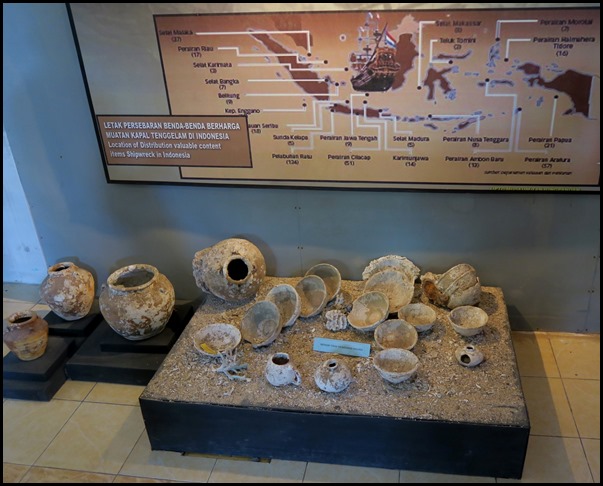 The map shows the location and
distribution of valuable shipwrecks in Indonesian
waters.
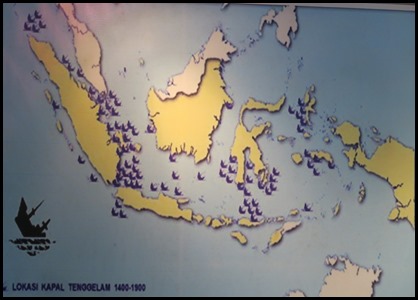 Under this wreck
map was the information panel that read: In the sea of Indonesia, is
estimated there are 463 potential points of origin treasure cargo ship sank.
Based on the assumption of international circles, every point has a sale value
of at least 10 million U.S. dollars. Thus, the potential treasure trove of
Indonesia could range between one to five billion U.S. dollars (Rawis, 2004:
91).
Data from DKP to mention that
there are approximately 700 to 800 point potential treasure to be appointed, but
the newly identified 463 points. Until now approximately 46 points already
raised, or about 10 per cent.
We got the gist and can see if the
Government ever needed a huge amount of money they would not have too far to
look and most of it in relatively shallow waters.
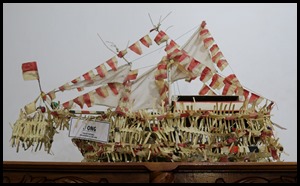 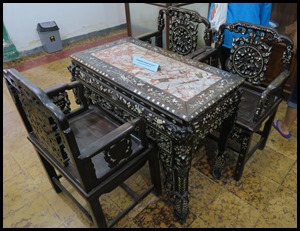 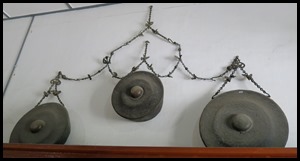 Back through the Chinese bits and bobs.
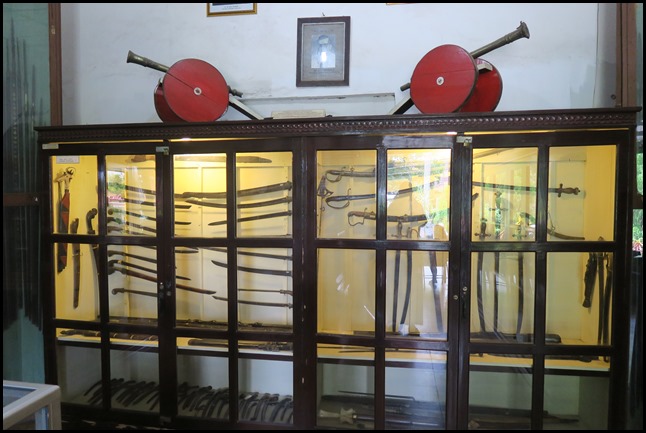 Past the weapons
display.
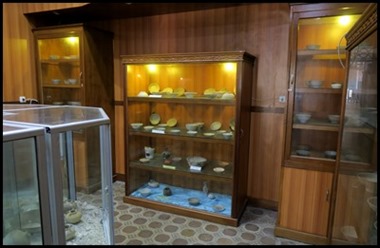 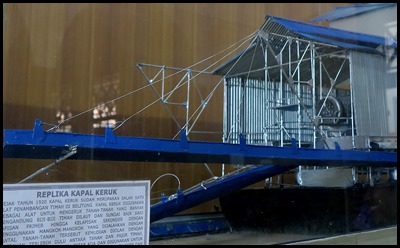 And back to where
we had started.
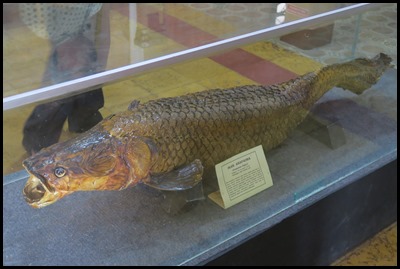 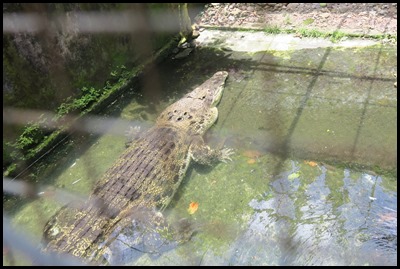 Inside – an ugly
brute. Outside – the same can be said of the
saltwater crocodile.
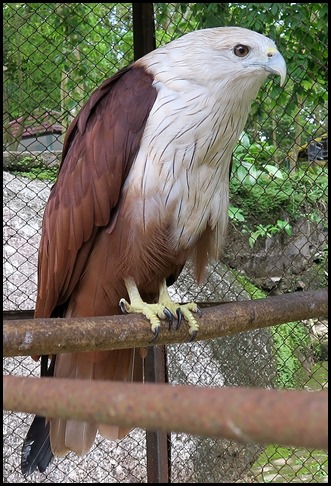 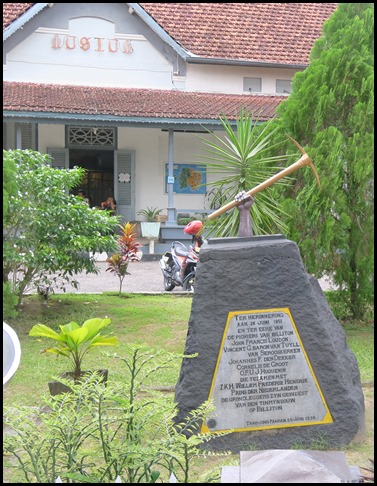 Our final chap was
extremely handsome, with that on board the bus and with a final look we were off to lunch at the invitation of the
Regent.
ALL IN ALL A REAL
GEM
A REALLY INTERESTING PLACE TO
VISIT |